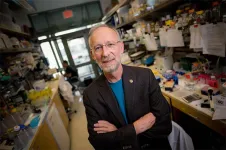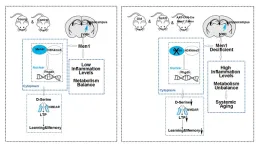(Press-News.org) For every dollar spent, the state has seen a $231 return
In the late 1980s, when smoking was still allowed on some airline flights, California boosted its tax on cigarettes from 10 to 35 cents a pack, devoting 5 cents to programs to prevent smoking.
The newly created California Tobacco Control Program funded anti-tobacco media campaigns and community programs to try to improve public health, but some questioned whether the efforts were worth the cost.
Now comes an answer: For every dollar California spent on smoking control, health care costs fell by $231.
Over three decades that witnessed historic lawsuits and expanding smoking bans, California’s smoking population fell from 21.8% in 1989 to 10% in 2019. Its anti-tobacco program accounted for 2.7 of those percentage points, which may seem small but yielded large savings. Those who didn’t quit ended up cutting back by an average of 119 packs per year in response to the program, according to the study, which appears March 16 in PLoS One.
Senior author Stanton Glantz, PhD, the recently retired founding director of the UCSF Center for Tobacco Control Research and Education, summed up the findings this way: “Tobacco control programs save a fortune.”
Over the 30-year history of the program, Californians pocketed $51.4 billion they would otherwise have spent on cigarettes. Total health care savings came to $816 billion.
“The return on investment is gigantic,” Glantz said. “These programs aren’t just saving lives and making people feel better, they’re also saving people money.”
Shaping Anti-Tobacco Policy
Doing the econometric work to track the relationship between three types of spending – state tobacco control, consumer tobacco purchasing and health care expenses – over three decades were lead author James Lightwood, PhD, a UCSF associate professor of clinical pharmacy, and Steve Anderson, a financial industry forecasting expert. They developed a predictive validation of a model that Lightwood and Glantz first developed using 1989-2008 data and updated estimates of the program effect.
The model has held up over 30 years, almost ten years beyond the original sample, through changing economic conditions and levels of California tobacco control spending, according to Lightwood.
“This paper significantly strengthens the case that there is a causal relation between tobacco control and smoking reduction,” Lightwood said.
The authors said the modeling results can help shape tobacco policy in states considering tobacco control measures and in those where support for existing programs may be wavering. The forecasting methods used in the paper are very much like those that large businesses use to inform major business decisions, Anderson said.
“Any state with a high level of smoking that launches a substantial, long-term program should get results similar to California’s,” Lightwood said. “But public policy has unique challenges. The political expediency of short-term thinking dogs many tobacco-control efforts.”
California is large and diverse, spanning rural and urban areas, and its population includes many races and ethnicities across the socioeconomic spectrum.
“California is so big that it can be considered average in many ways relevant to the evaluation of a tobacco control program,” Lightwood said.
Benefits Grow Over Time
In previous research, Lightwood and Glantz have shown short-term cost benefits of tobacco reduction – heart attacks, strokes and low birthweight decline quickly. The current paper models both the short and long-term effects of state programs, which also reflect declines in slower-to-emerge diseases, such as lung cancer.
“The benefits grow over time as more and more diseases are prevented,” Lightwood said. “If you do a less comprehensive program for four or five years, then it’s hard to detect much change in the face of year-to-year variability and the program is vulnerable to attack. But, when the program is large, long-term and comprehensive, like California’s, we can confidently conclude that there are large and immediate benefits that grow with time.”
The new findings confirm that tobacco control efforts spur smoking reductions and that even a seemingly small reduction in smoking, like the 2.7% attributed to the state’s tobacco control program, quickly and significantly drives down health care expenses.
“Tobacco control,” Glantz said, “is one of the strongest things you can do for medical care cost containment.”
About UCSF: The University of California, San Francisco (UCSF) is exclusively focused on the health sciences and is dedicated to promoting health worldwide through advanced biomedical research, graduate-level education in the life sciences and health professions, and excellence in patient care. UCSF Health, which serves as UCSF's primary academic medical center, includes top-ranked specialty hospitals and other clinical programs, and has affiliations throughout the Bay Area. UCSF School of Medicine also has a regional campus in Fresno. Learn more at https://ucsf.edu, or see our Fact Sheet.
###
Follow UCSF
ucsf.edu | Facebook.com/ucsf | YouTube.com/ucsf
END
California’s anti-smoking push spurs big savings on health costs
2023-03-17
ELSE PRESS RELEASES FROM THIS DATE:
New trials show promising, minimally invasive procedure to treat resistant hypertension
2023-03-16
Hypertension remains poorly controlled worldwide and is becoming more common. Lifestyle changes and blood pressure-reducing drugs are the mainstays of therapy for hypertension, but despite widespread availability of these approaches, many patients with hypertension are not adequately treated. Those with uncontrolled hypertension are at increased risk of heart attack, heart failure, kidney disease and stroke.
A recent study published in JAMA demonstrates the effectiveness of a procedure done under the skin, similar to placing a stent, ...
Dedicated Neuroendocrine Tumors Program launched at Sylvester Comprehensive Cancer Center
2023-03-16
MIAMI, FLORIDA (March 16, 2023) – Aman Chauhan, M.D., and Sylvester Comprehensive Cancer Center at the University of Miami Miller School of Medicine have embarked on a mission to make Sylvester a top-level research center for neuroendocrine tumors and to make Miami a first-choice destination for patients seeking treatment for these complex cancers.
Chauhan, an internationally recognized neuroendocrine expert and the newly named leader of Sylvester’s Neuroendocrine Tumor Program, has devoted his career to neuroendocrine ...
Leading MS/PML experts recommend genetic testing to prevent fatal brain infection
2023-03-16
In an editorial in the journal Frontiers in Neurology, two leading multiple sclerosis (MS) experts are advocating for genetic testing to identify MS patients who are at higher risk of developing a devastating side effect from their medications.
People with MS are faced with the excruciating decision of whether they should take medications that are effective in slowing the progression of the disease, but may also trigger this potentially fatal complication, a rare brain infection called progressive multifocal leukoencephalopathy (PML).
The ...
Protein engineers navigate toward more targeted therapeutics
2023-03-16
More than a third of FDA-approved drugs work by targeting a G protein-coupled receptor, or GPCR. The human body has more than 800 types of GPCRs that provide cells with information about the external environment to calibrate responses. Drugs that either block or activate GPCRs are used to treat a wide range of diseases including hypertension, pain and inflammation. Most drugs bind to the outside of the receptor, but this can result in adverse side effects since receptors often resemble one another.
In a new study published in Nature, Sivaraj Sivaramakrishnan, a professor in the College of Biological ...
Antibody fragment-nanoparticle therapeutic eradicates cancer
2023-03-16
ITHACA, N.Y. -- A novel cancer therapeutic, combining antibody fragments with molecularly engineered nanoparticles, permanently eradicated gastric cancer in treated mice, a multi-institutional team of researchers found.
The results of the “hit and run” drug delivery system, published in the March issue of Advanced Therapeutics, were the culmination of more than five years of collaboration between Cornell, the Memorial Sloan Kettering Cancer Center (MSKCC) and biopharmaceutical company AstraZeneca.
“I’ve seen beautiful ...
Childhood volunteering encourages future voting in elections, study shows
2023-03-16
Childhood volunteering encourages those from politically disengaged homes to go on and vote when they are older, a major new study shows.
Community action leads to them becoming more interested in politics and to see voting as a duty, according to the research.
However volunteering didn’t have the same impact for most children, so it shouldn’t be seen as the answer to falling voter numbers.
The research was carried out by Dr Stuart Fox, now at the University of Exeter and conducted while he worked at Brunel University. He used the United Kingdom Household Longitudinal Survey and structural equation modelling to examine ...
Extinct animals on islands cannot be replaced
2023-03-16
Lush plants, large trees and many different, beautiful and colorful exotic animals. This is probably how most people imagine the small island of Mauritius in the Indian Ocean.
But that may not be the case. As in several other places in the world, the island and its nature are at risk of mass extinction, and in just a decade or two the flourishing nature and the many diverse animals may have dwindled to very few.
At least if the extinction of the many plants and animals on the island continues. They are part of a particularly sensitive ...
DNA treatment could delay paralysis that strikes nearly all patients with ALS
2023-03-16
In virtually all persons with amyotrophic lateral sclerosis (ALS) and in up to half of all cases of Alzheimer’s disease (AD) and frontotemporal dementia, a protein called TDP-43 is lost from its normal location in the nucleus of the cell. In turn, this triggers the loss of stathmin-2, a protein crucial to regeneration of neurons and the maintenance of their connections to muscle fibers, essential to contraction and movement.
Writing in the March 16, 2023 issue of Science, a team of scientists, led by senior study author Don Cleveland, PhD, Distinguished Professor of Medicine, Neurosciences and Cellular and Molecular Medicine at University ...
Loss of Menin helps drive the aging process, and dietary supplement can reverse it in mice
2023-03-16
Decline in the hypothalamic Menin may play a key role in aging, according to a new study publishing March 16th in the open access journal PLOS Biology by Lige Leng of Xiamen University, Xiamen, China, and colleagues. The findings reveal a previously unknown driver of physiological aging, and suggest that supplementation with a simple amino acid may mitigate some age-related changes.
The hypothalamus has been recognized as a key mediator of physiological aging, through an increase in the process ...
Dana-Farber researchers chart a course for understanding, preventing, and treating young-onset colorectal cancer
2023-03-16
Colorectal cancer among young people is increasing globally and rapidly. Experts expect it to become the leading cause of cancer death in individuals aged 20-49 in the U.S. by the year 2030.
Yet no one is certain why this disease is suddenly affecting so many young people. In a new paper published in Science, Dana-Farber Cancer Institute researchers outline the complexities of the disease and the research needed to map out a path toward understanding it.
“The rising incidence of young-onset colorectal cancer is extremely concerning, and it is urgent that the scientific community comes together to better understand the underlying ...


